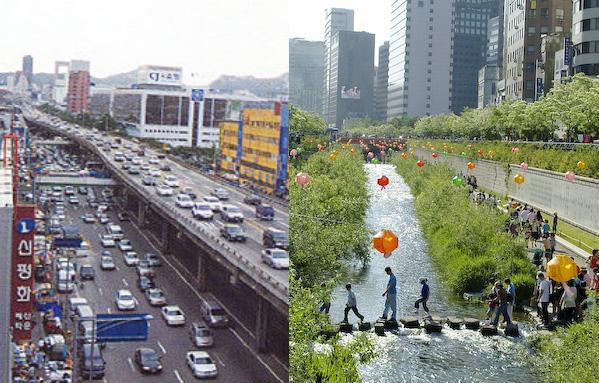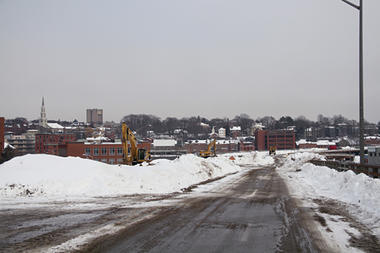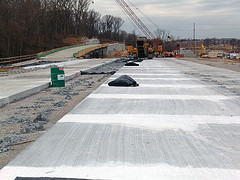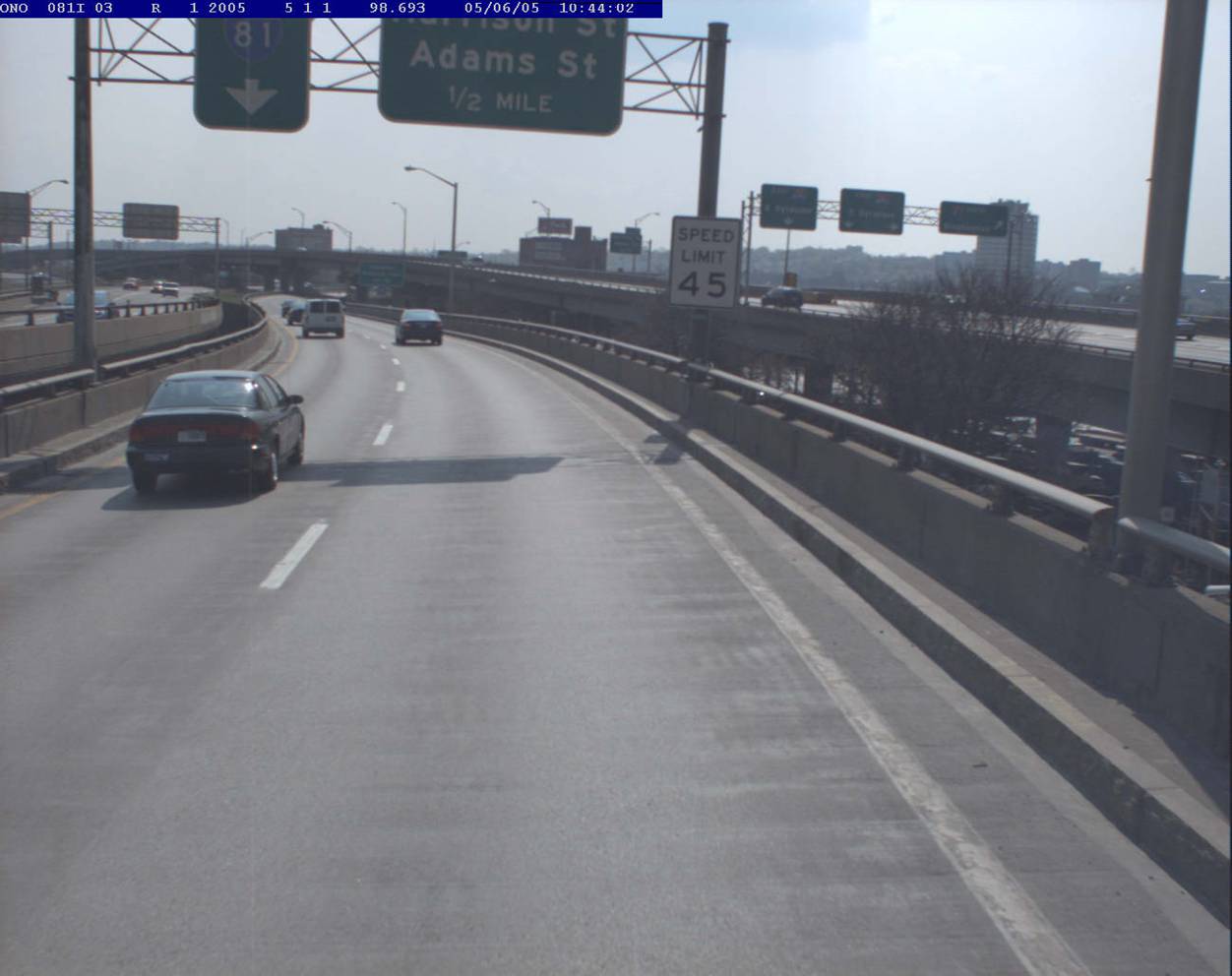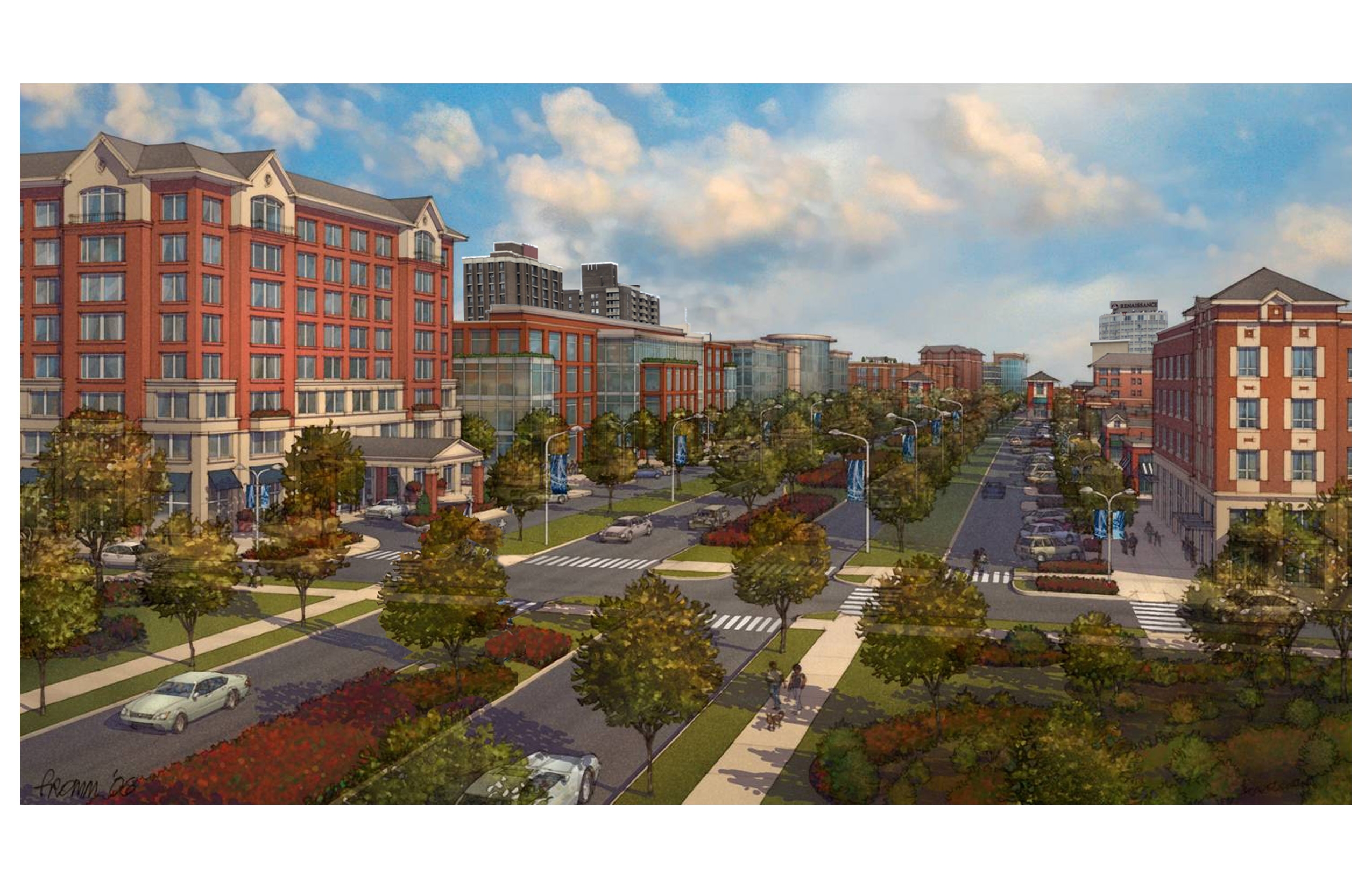THE ARCHITECT’S NEWSPAPER
02.21.2011
Chicago’s Lawrence Avenue to Get a Trim
Planned ‘road diet’ will bring bike lanes, street trees, and pedestrian amenities to major commercial corridor

Lawrence Avenue east of Western Avenue will include curb extensions with bioswales and pedestrian refuges.
Courtesy CDOT
Crossing the street in Chicago is about to get a little easier. The Chicago Department of Transportation (CDOT) plans to start trimming the excess off four-lane Lawrence Avenue on the North Side. It will be the first busy thoroughfare to be altered as a result of a complete streets policy adopted in 2007, in favor of a more balanced approach to road design that considers pedestrians, cyclists, transit riders, as well as drivers.
Placing oversized streets on a so-called “road diet” has already been tested on at least ten of Chicago’s residential streets in recent years, but with the upcoming repaving project on one of the city’s busy corridors, the time is right to take the concept mainstream.
A mile-long stretch of Lawrence Avenue between Western and Ashland avenues with four travel lanes will be cut to three with full bike lanes and wider sidewalks. Janet Attarian, a streetscape project director at CDOT, said a few targeted changes will go a long way toward improving a neighborhood. And providing opportunities for sidewalk dining with new benches, lighting, and 150 new trees should make heavily trafficked Lawrence far more appealing.
Adolfo Hernandez, director of outreach and advocacy at the Active Transportation Alliance, agrees. His organization undertook a walkability study after a string of pedestrian and cyclist injuries, presenting their findings to the city’s aldermen, who requested CDOT take on the project.

New street trees and a bike lane are included on Lawrence Avenue west of Western Avenue.
“We’re not minimizing the role of the car,” Hernandez said of removing lanes. “We’re balancing multiple modes of transportation.” Still, Attarian says car travel will be effected. “We’re not going to deny it has an impact on traffic, but it brings a better pedestrian environment.”
Increased walkability is expected to be an economic boon, as well. According to Hernandez, businesses along walkable streets tend to do better and see higher foot traffic than roads geared solely to the car. “Moves like this can push a place to the tipping point.”
Lawrence Avenue’s current layout presents undeniable challenges. “Whenever you have a fast-moving, wide road, it’s going to act as a barrier,” Attarian said. She hopes the improvements will also help connect the corridor with recent streetscape improvements on nearby Lincoln Avenue.
Instead of flash swamps at the corner, curb extensions with bioswales to capture rainwater runoff will narrow the street at crosswalks, along with pedestrian refuges in the central turning lane, that should further increase pedestrian safety.
Including bioswales in the bumpouts actually saves money, Attarian explained. One cost typically overlooked when narrowing a street is relocating catch basins. The swales allow basins to remain in place inside new planters.
East of Ashland, Lawrence currently contains only two travel lanes, but will still undergo a similar slimming treatment. Sidewalks will be extended to accommodate 100 new shade trees and allow for al fresco dining.
The city is now completing the streetscape design for Lawrence Avenue, and the road diet will be realized in two phases over the next several years. Funds are being sought, and the final project is expected to cost between $14 and $20 million.
For local advocates, Lawrence Avenue is just the beginning. “We’re pretty excited that there seems to be a more balanced approach to road design,” Hernandez said. “Lawrence Avenue is a really nice start.” Cars have been king of the road for too long, he said: “We’re moving in the other direction.”
